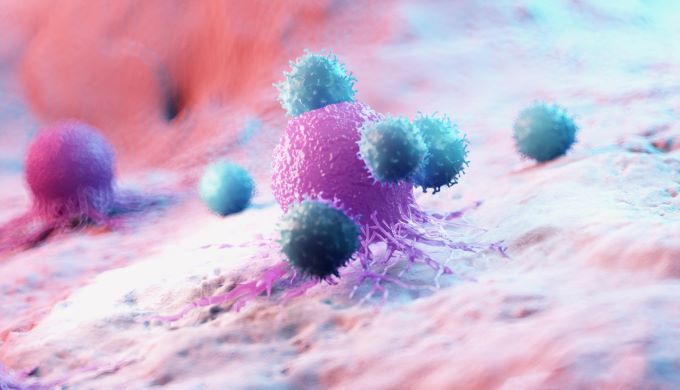Author: Lucy Piper
medwireNews: DOPA decarboxylase (DDC) could be an effective biomarker for dopaminergic dysfunction, detecting early and preclinical Lewy body disease (LBD) and atypical Parkinsonian disorders, say researchers.
“DDC is an enzyme that converts levodopa into dopamine, the latter being severely depleted in LBD due to the loss of dopaminergic neurons in the substantia nigra”, Oskar Hansson (Lund University, Malmö, Sweden) and colleagues explain in Nature Aging.
They found that increased cerebrospinal fluid (CSF) levels of DDC identified patients with LBD with 89% accuracy, and those with preclinical LBD with 81% accuracy.
The findings highlight that the biomarker has “important clinical value for detecting LBD” and is “a potential candidate marker for detection of preclinical LBD with relevance for early interventional trials.”
The investigators carried out a differential expression analysis of 2943 proteins in 81 patients with LBD, including 48 with Parkinson’s disease and 33 with dementia with Lewy bodies, and 347 individuals without Parkinsonian disorders, from the Swedish BioFINDER 2 cohort.
Among 10 proteins that were significantly upregulated in patients with LBD compared with controls, DDC distinguished between the two groups with the greatest accuracy (89%), sensitivity (83%) and specificity (83%), after adjusting for age and sex.
The researchers note that DDC was also upregulated in LBD patients with early clinical disease who were not yet receiving dopaminergic medications.
In fact, it was already significantly increased among 35 people who were positive for α-synuclein aggregation but had no symptoms of LBD. Indeed, DDC distinguished this group from 310 individuals who were negative for α-synuclein aggregation with a sensitivity and specificity of 77% and 85%, respectively.
DDC also showed “important prognostic value”, say the authors, predicting the conversion from preclinical to clinical LBD. Of the 35 individuals with α-synuclein aggregation but no symptoms, 12 progressed to clinical LBD over a 2.5-year period and they were 3.7 times more likely to have high DDC levels than those who did not progress.
Hansson et al note that DDC’s association with symptoms was significant for poor cognitive performance but not for motor symptoms.
DDC’s diagnostic ability was not limited to LBD, the team points out. Levels were also significantly increased in 40 patients with atypical Parkinsonian syndromes, including multiple system atrophy, progressive supranuclear palsy and corticobasal syndrome, compared with 347 controls. People with these syndromes were identified by DDC with 79% accuracy and a sensitivity and specificity of 89% and 61%, respectively.
This suggests that “DDC might be a marker of dopaminergic dysfunction rather than α-synuclein-based Lewy body pathology”, say the authors.
“Since α-synuclein SAA [seed amplification assay] is an accurate biomarker for LBD but not always for atypical Parkinsonian disorders (which lack Lewy bodies), we suggest that DDC and α-synuclein SAA may be combined in clinical practice in the future”, say the researchers, whereby “high DDC and abnormal α-synuclein SAA would indicate LBD, whereas high DDC and normal α-synuclein SAA would indicate an atypical Parkinsonian disorder.”
They highlight that DDC as a biomarker appeared to be specific to Parkinsonian disorders, with upregulation not occurring in patients with non-Parkinsonian disorders, such as Alzheimer’s disease, frontotemporal dementia or vascular dementia.
Hansson et al replicated their findings for CSF levels of DDC in the BioFINDER 1 cohort, and also quantified plasma concentrations of the protein, recognizing that “plasma biomarkers could be more easily implemented in clinical practice and drug trials.”
This showed that plasma DDC levels could identify both LBD and atypical Parkinsonian disorders with 92% accuracy.
“Our findings suggest that CSF DDC is a highly promising biomarker for Parkinsonian disorders”, the team concludes.
News stories are provided by medwireNews, which is an independent medical news service provided by Springer Healthcare Ltd. © 2023 Springer Healthcare Ltd, part of the Springer Nature Group
This independent news story was supported by an educational grant from L’Institut Servier, Suresnes, France.
Image Credits: © Dr_Microbe / stock.adobe.com



